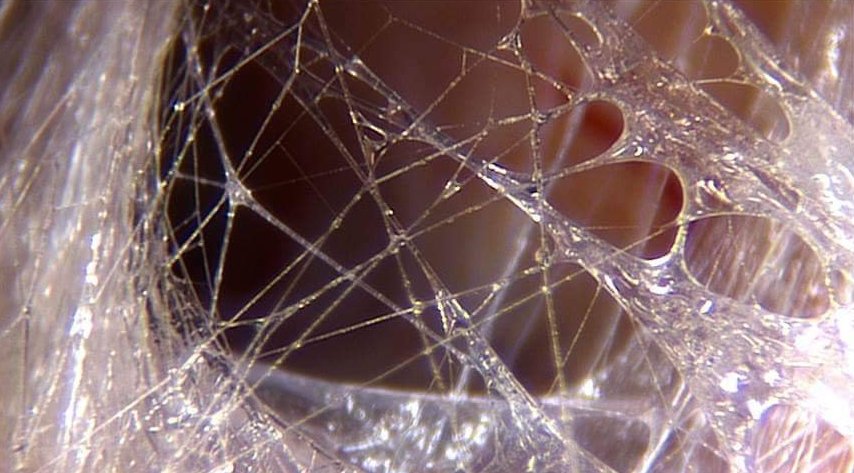
A Brief Introduction to Fascia: Structure, Function & Importance
Written by Zak Roser
Have you ever wondered what those white lines are running through your steak? You guessed it (or maybe you didn’t) – fascia. This is exactly what envelopes and is interlaced with your muscles and organs.
Fascia – in the simplest terms possible – is a connective tissue structure that runs everywhere in your body, intertwining with your organs, muscles and laying underneath the skin. It is an integral part of the human body that is constantly changing to adapt to daily stimuli and helps you to hold your shape. Fascia even runs into the nucleus of cells! That’s how small and expansive it is. In general, these facial web fibers are known as fibroblasts.
Fascia operates under the principle of tensegrity. Tensegrity is defined as “the characteristic property of a stable three-dimensional structure consisting of members under tension that are contiguous and members under compression that are not.” Meaning, if one piece of the fascia fails, the structure would lose its rigidity.
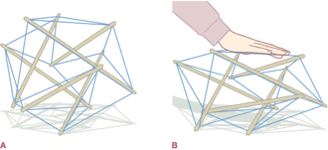
In the image above, this principle can be seen in action. In the body, the bones or skeletal system act as the struts. The muscles, ligaments and tendons are the tension components of the model which are in blue. If the body is balanced and functioning properly, the body will be in equilibrium with a balance between the compressive and tensile structures.
Ingber (1993) stated that “only tensegrity can explain how every time you move your arm, your skin stretches, your ECM extends, your cells distort, and interconnected molecules that constitute the internal framework of the cell feel the pull – all without any breakage or discontinuity” (Lindsay 43).
Fascia is made from 70-80% water. But this water is stored in the form of crystals. Robert Schliep, author of Fascial Fitness, believes fascia can change and adapt 3-4 times faster than the nervous system – phenomenal to say the least. Another reason why it is crucial for your body’s success in various stimuli, it must react and adapt quickly.
Why should this matter to you?
As previously stated fascia is an integral part of the human body, if you are interested in longevity and health, it is important to care for the entire body. Unhealthy or damaged fascia becomes more fibrous, less fluid and reactive to the body’s needs. These damaged fascia fibers are known as myofibroblasts – they create stiffness in injured fascia (Miller 97). The myofibroblasts make up the fascia in the damaged area and since these fibers are larger and thicker, water and fluid flows through with more resistance, in turn limiting movement.
When fascia becomes damaged, it can become dehydrated and therefore adhesions can occur. This is vital to consider because muscles are enveloped in what is known as fascial sheaths. These sheaths need to be healthy (undamaged and hydrated) so they can move and slide across each other. When injuries occur, the area is often less mobile during the healing process. Due to decreased movement, the sheaths grow into one another and form adhesions. These adhesions can occur with muscles and also on a more micro level with fascial layers becoming less mobile (Lindsay 72).
How do you hydrate your fascia?
Unfortunately it’s not as simple as just drinking fluids. As you can imagine, in order to be healthy, fascia needs to move and be stimulated. For example, if you sit or hold unnatural positions throughout the work day, your fascia is unable to get the necessary fluids as it is already under stress. Therefore, you must move. In a general sense, I mean postural and proprioceptive exercises. Movements that don’t tax the muscles from a strength standpoint but connect mind and body in a functional way. This can be as simple as isolating movement at all your joints – starting at the neck and working your way down – like with this CARs routine.
How can I feel my fascia?
The fascial system is extremely complex with fascial slings running through the entire body. These fascial slings are important when testing flexibility and functional range of motion (ROM). An example of this interconnectivity is shown below in blue.
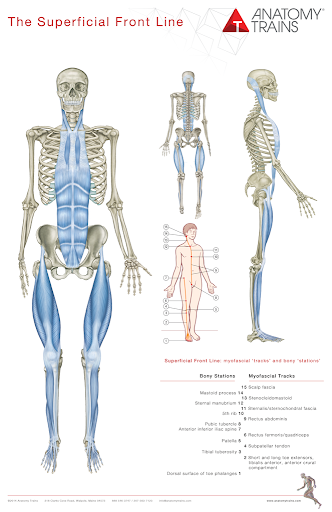
Based on this, rolling at the specific point of tightness or discomfort may not be the most effective. Think of loosening the fascial tissue “up and down stream” from the restriction area. Below I share two simple rolling techniques that can help improve ROM in regards to slings. Also, when rolling muscles out, I would encourage keeping the muscular discomfort extremely low. “Fighting through the pain” per se, can be counterintuitive due to the fact that the muscle will want to contract when in a stressed or painful state.
In closing, fascia is fascinatingly complex so I hope this gave you a deeper understanding of how the body works and moves. But due to its complexity, masters in the field are still researching the subject. I would encourage you to do some research on your own as well, experts would include Thomas Myers, Mark Lindsay, Robert Schliep and more.
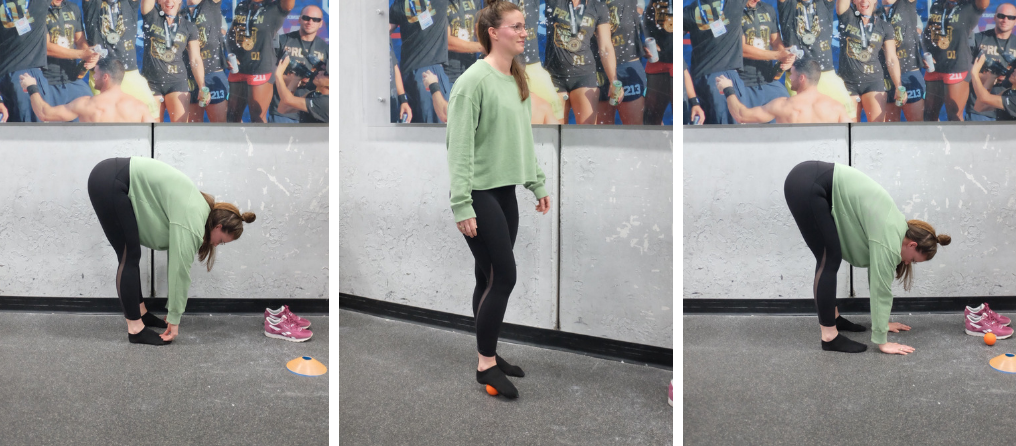 Hamstring Tightness Relief
Hamstring Tightness Relief
Image 1: Bend and touch toes to check in to see how each hamstring feels. One may feel tighter than the other – note that.
Image 2: The plantar fascia (bottom of the foot) is the start of a fascial sling that runs all the way to your head. Therefore, if you roll the bottom of the foot – your hamstring will loosen.
Technique: Roll with a pressure that gives you minimal-to-no discomfort, spending more time on the perimeters of the foot at first, then working your way to the center.
Image 3: Re-test! I would encourage doing one leg, test and repeat. This will give you a reference point for comparison.
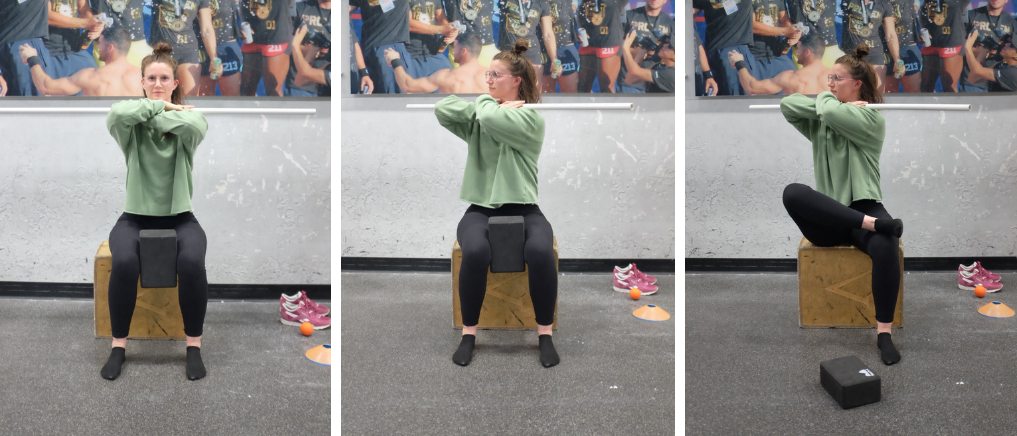
Thoracic Rotation Mobility Test
Image 1: Set up on a seat with your feet flat on the floor and a block between the knees to keep the hips from rotating.
Image 2: Rotate in your thoracic spine as far as you are comfortably able. NOTE: Do you feel more restricted in your latissimus dorsi or glutes?
Image 3: Cross the rotating leg over the stationary. Then repeat the rotation, this will give you a sense of what the source of the tightness is. You are more likely to be limited by glute tightness in this position.
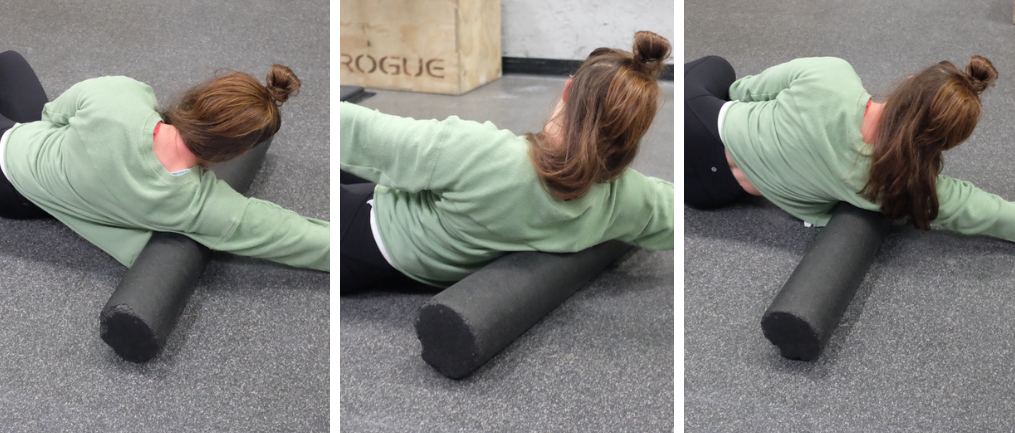
Roll and Retest
In coach Libby’s case, the majority of the tightness was felt in her latissimus dorsi, therefore we chose to spend more time there.
Images 1-3: Libby is rolling her latissimus dorsi at various angles to stimulate fluid movement. I would encourage performing more rotations and cat-cows to stimulate more fluid in the region.
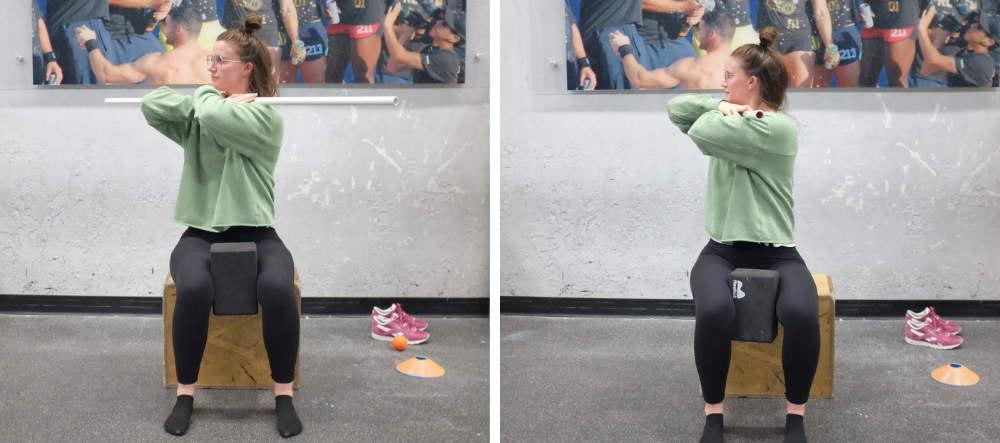
Thoracic Test & Retest
Image 1: Original test
Image 2: After work loosening the fibers of the latissimus dorsi
Resources & Fascia Photos Courtesy of:
Anatomy Trains – Thomas Myers
Fascia: Clinical Applications for Health and Human Performance – Mark Lindsay
Fascia: What it is and why it matters – David Lesondak
The Roll Model – Jill Miller